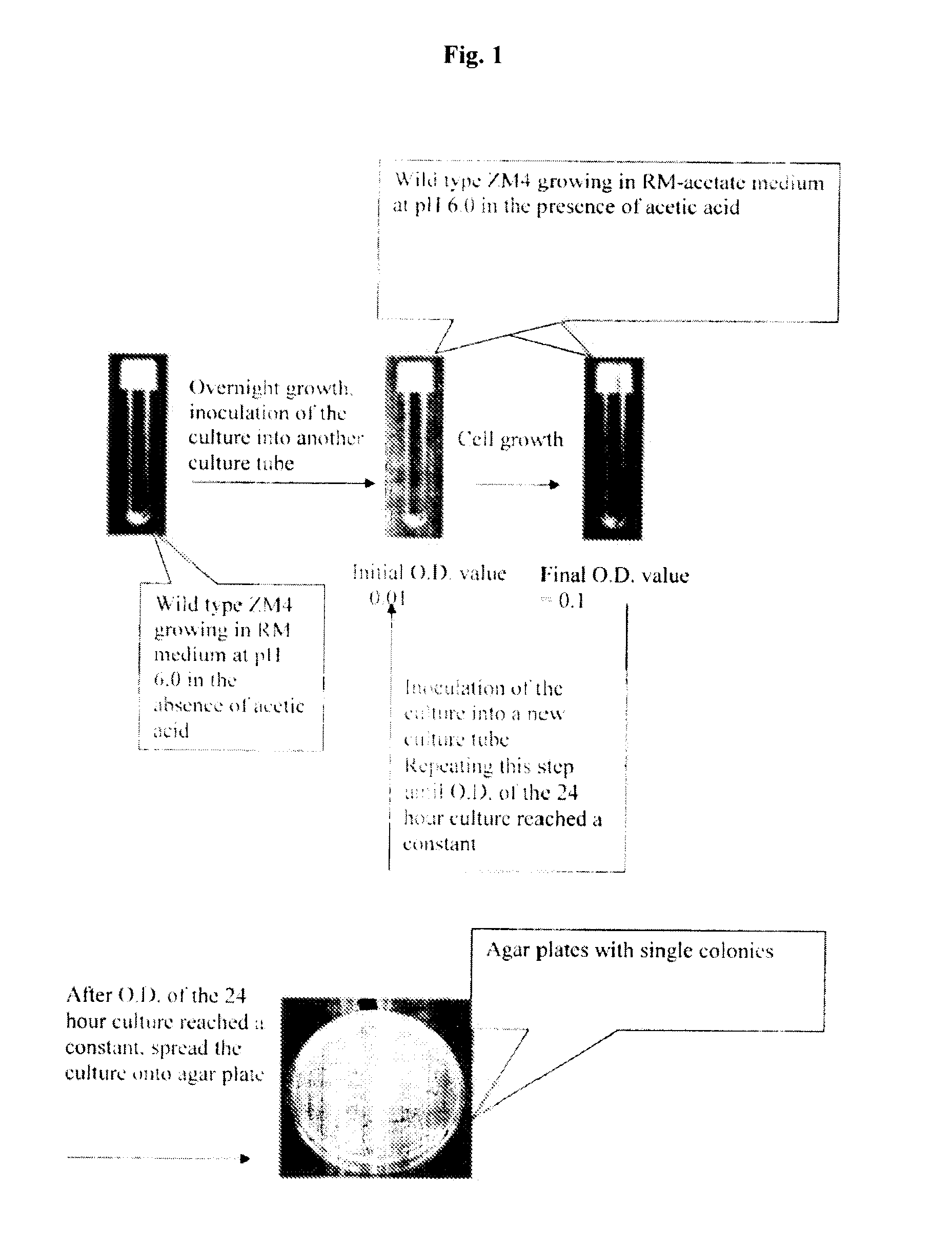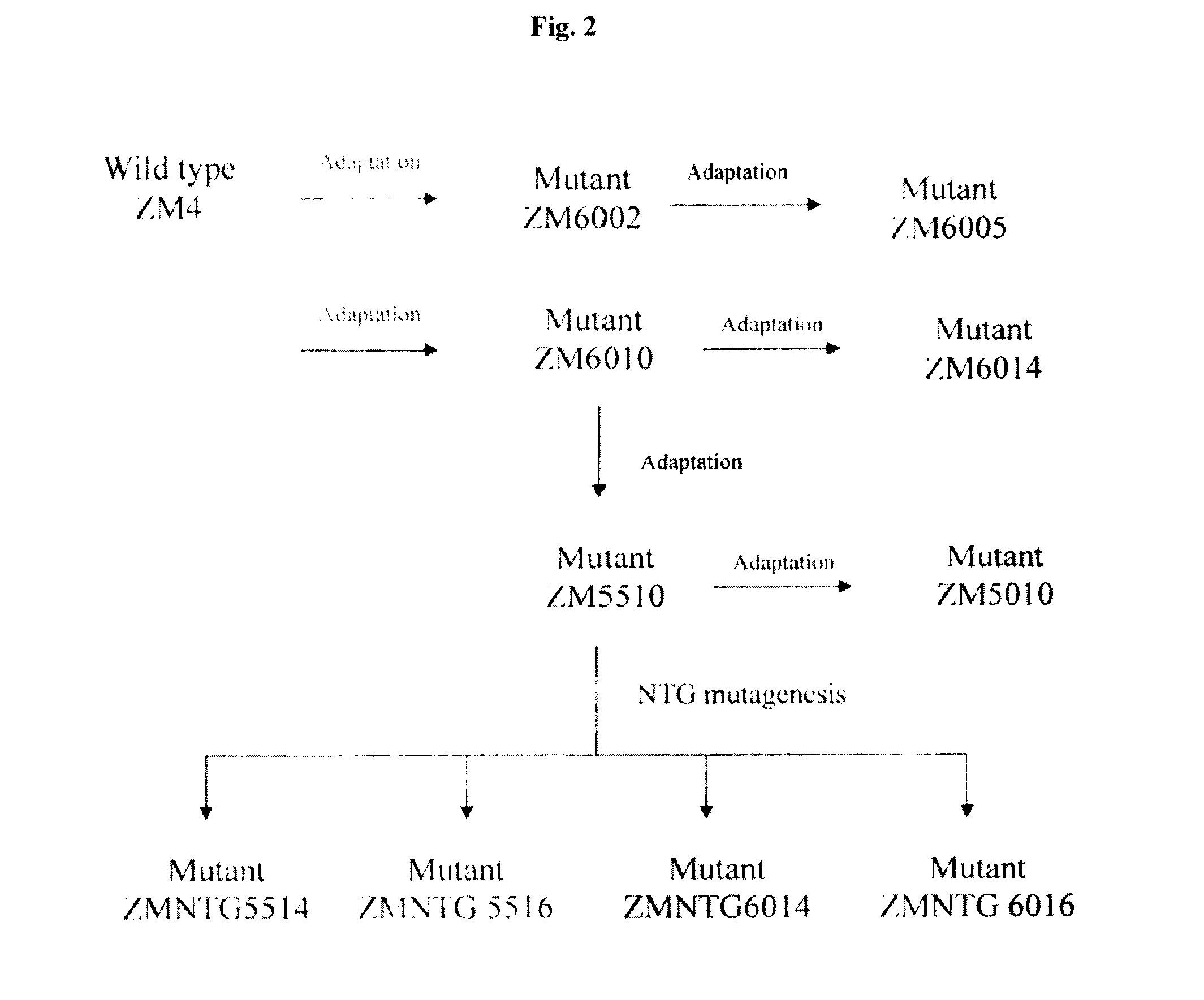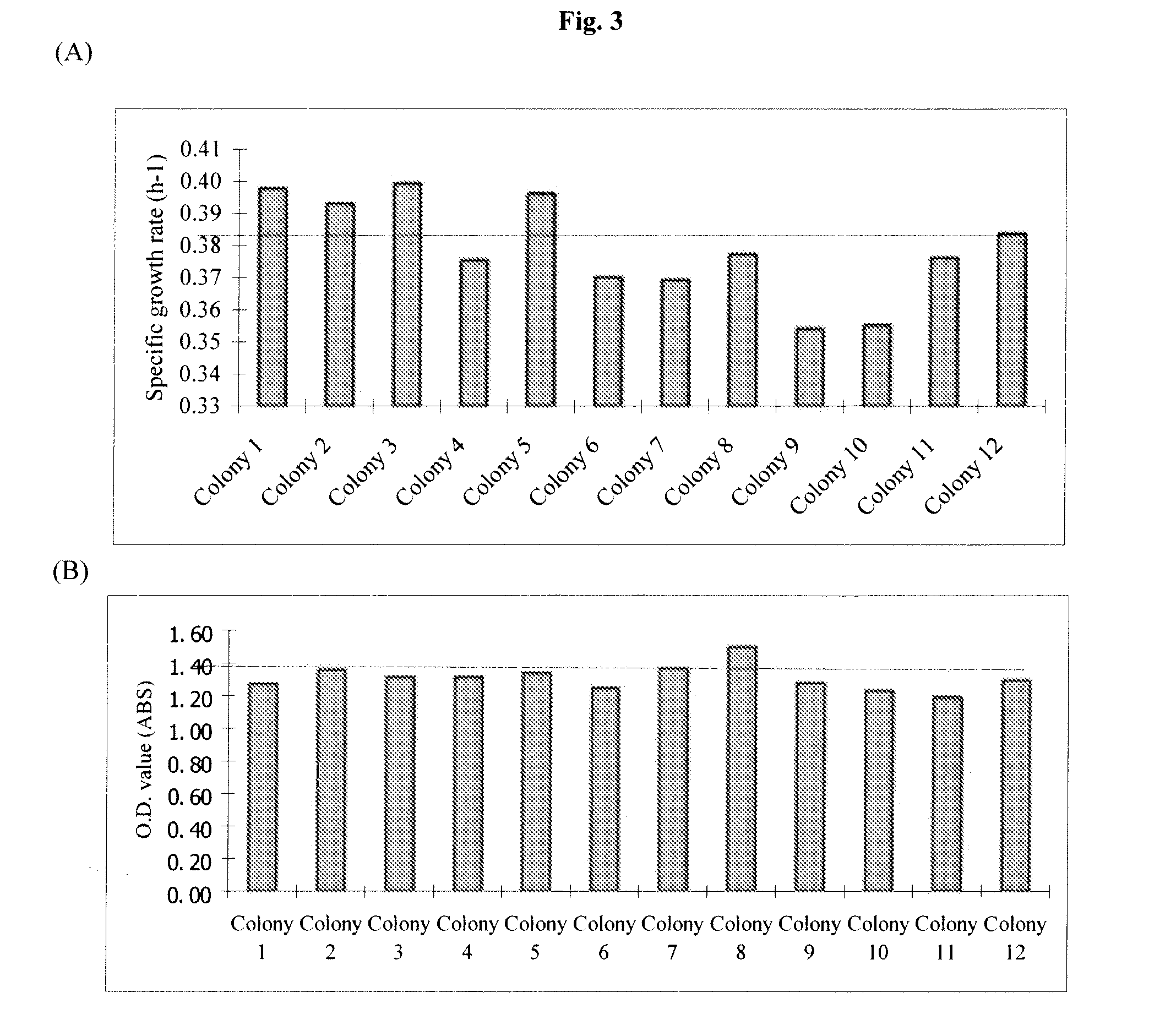Strains of zymomonas mobilis for fermentation of biomass
- Summary
- Abstract
- Description
- Claims
- Application Information
AI Technical Summary
Benefits of technology
Problems solved by technology
Method used
Image
Examples
example 1
Adaptive Mutation by Increasing Acetic Acid Concentration
[0141]The procedure of adaptive mutation is illustrated in the FIG. 1, using the first round adaptation as an example. In the first step, Z. mobilis (ZM4) strain was grown in RM medium in the absence of acetic acid at pH 6.0 and 30° C. without shaking. After overnight growth, the Z. mobilis was inoculated into a new culture tube containing RM-acetate medium supplemented with acetic acid concentration (0.05%, 0.1%, 0.15%, and 0.2%). The initial O.D. value was 0.01. The culture was then incubated under the same condition as above until the O.D. value reached 0.1. An aliquot of culture was inoculated into a new culture tube containing the same but fresh RM-acetate medium to an O.D. of 0.01, and the cells were allowed to grow. Once O.D. reached 0.1, a new culture was started. The cycle repeated several times until the O.D. of the twenty-four hour culture reached a constant. The culture from the last cycle was then plated on an aga...
example 2
Adaptive Mutation by Reducing pH
[0157]The previous rounds of adaptation in example 1 were carried out at pH 6.0. In an attempt to generate better mutants, adaptation was also performed at lower pH. Mutant ZM6010 was chosen as the starting point because it was adapted with 1.0% acetic acid, which was an intermediate acetic acid concentration.
[0158]This adaptation was carried out in essentially same way as previous rounds described in Example 1, except the pH was lowered to 5.5. After adaptation, single colonies were obtained, and were subjected to the same screening procedure as previous rounds.
[0159]FIG. 8 shows the screening results of the nine colonies selected from plate containing 1.0% acetic acid at pH 5.5. Based upon data presented in FIG. 8, colony 7 was selected for further adaptive mutation. This mutant was named ZM5510. The glycerol stocks were made for this strain and stored in the −80° C. freezer.
[0160]Mutant ZM5510 was further adapted in the medium with 1.0% acetic acid...
example 3
NTG Mutagenesis
[0163]NTG mutagenesis was used previously by other researchers in an attempt develop acetic acid tolerance. In an attempt to improve the acetic acid tolerance of our mutants, the selected mutant was further treated by NTG mutagenesis. The seed strain was mutant ZM5510. Following NTG mutagenesis as described in chapter 4, the cultures were plated on agar plates containing different concentrations of acetic acid (1.0%, 1.2%, 1.4% and 1.6%) and at different pHs (5.0, 5.5 and 6.0). Single colonies were formed on the agar plates at each acetic acid concentration at pH 5.5 and 6.0. However, single colony was only formed on the solid medium with 1.0% acetic acid concentration at pH 5.0. The colonies were small and it was difficult to tell which one was bigger with naked eyes. There were only a few colonies on each plate, hence, only three or four single colonies were picked for screening.
[0164]FIG. 10 shows the specific growth rate, O.D. value and ethanol concentration of th...
PUM
| Property | Measurement | Unit |
|---|---|---|
| Fraction | aaaaa | aaaaa |
| Time | aaaaa | aaaaa |
| Time | aaaaa | aaaaa |
Abstract
Description
Claims
Application Information
 Login to View More
Login to View More - R&D
- Intellectual Property
- Life Sciences
- Materials
- Tech Scout
- Unparalleled Data Quality
- Higher Quality Content
- 60% Fewer Hallucinations
Browse by: Latest US Patents, China's latest patents, Technical Efficacy Thesaurus, Application Domain, Technology Topic, Popular Technical Reports.
© 2025 PatSnap. All rights reserved.Legal|Privacy policy|Modern Slavery Act Transparency Statement|Sitemap|About US| Contact US: help@patsnap.com



